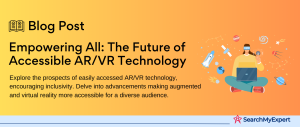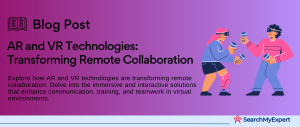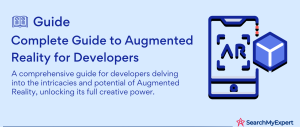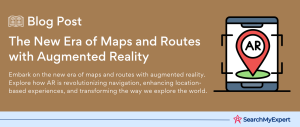AR/VR in Healthcare: Revolutionizing Medical Practices
The Emergence of AR and VR in Healthcare
Augmented Reality (AR) and Virtual Reality (VR) are no longer just buzzwords in the tech world. They have begun a transformative journey in various sectors, especially healthcare. These technologies offer immersive experiences that were once in the realm of science fiction.
Augmented Reality (AR): Enhancing Real-World Interactions
AR adds digital elements to a live view, often by using the camera on a smartphone or AR glasses. In healthcare, AR can be used for complex surgical procedures, medical training, and patient care, providing an interactive experience that enhances understanding and efficiency.
Virtual Reality (VR): A Dive into Virtual Environments
Contrastingly, VR implies a complete immersion experience that shuts out the physical world. Using VR headsets, healthcare professionals can simulate surgeries, offer virtual therapy sessions, and provide a controlled environment for patient rehabilitation and education.
Growing Interest in Healthcare Applications
The healthcare industry is rapidly adopting AR and VR technologies due to their potential to improve diagnosis, treatment, and patient outcomes. They offer innovative approaches to medical education, complex surgery, patient care, and therapy.
- Medical Education and Training: Through AR and VR, medical students can practice surgeries and diagnostics in a risk-free, virtual environment, gaining experience before handling real-life cases.
- Surgical Precision and Planning:
Surgeons use AR to project 3D models of patient anatomy during operations, improving precision and outcomes. - Patient Education and Rehabilitation:
VR applications create simulations for patient education, while AR assists in physical therapy by setting interactive tasks.
Potential Benefits
The integration of AR and VR in healthcare promises significant advantages:
- Improved Diagnosis and Treatment:
These technologies offer detailed visualizations, aiding in accurate diagnoses and efficient treatment plans. - Enhanced Patient Care:
AR and VR provide innovative ways to treat phobias, anxiety, and PTSD, as well as aiding in physical rehabilitation. - Reduced Risk in Training:
Virtual simulations in medical training reduce the risk to patients, as practitioners gain experience in a controlled environment.
Revolutionizing Medical Procedures
Augmented Reality (AR) is more than just a technological marvel; it’s a practical tool reshaping healthcare. By overlaying digital information onto the real world, AR offers an interactive and enhanced view of reality.
AR Overlays: A Blend of Digital and Real Worlds
AR works by superimposing computer-generated images on a user’s view of the real world, thus providing a composite view. This integration allows healthcare professionals to see and interact with both physical and virtual elements simultaneously.
AR in Medical Training: Bridging the Gap between Theory and Practice
Medical training is one of the fields most revolutionized by AR.
- Visualizing Anatomical Models:
AR can project detailed anatomical structures onto patients or cadavers, allowing medical students to visualize body systems in a realistic setting. - Interactive Learning: Students can interact with these models, gaining a deeper understanding of human anatomy and medical procedures.
AR in Surgery: Enhancing Precision and Safety
Surgery has witnessed a significant transformation with the introduction of AR.
- Overlaying Medical Images:
Surgeons can use AR to overlay scans like X-rays or CT images directly onto the patient’s body during surgery. This real-time guidance improves accuracy in navigating complex anatomies. - Minimally Invasive Procedures:
With AR’s precise guidance, surgeries can become less invasive, reducing recovery time and risk of complications.
AR in Rehabilitation: A Fun and Effective Approach
Physical rehabilitation is another area where AR shows immense promise.
- Interactive Rehabilitation Games: AR creates engaging games and exercises, turning mundane physical therapy routines into an enjoyable activity.
- Personalized Therapy: These AR applications can be tailored to individual patient needs, improving adherence and recovery outcomes.
VR in Healthcare – Transforming Therapeutic Approaches
Virtual Reality (VR) in healthcare is not just about technology; it’s about creating a new realm of therapeutic possibilities. VR’s ability to create a completely immersive virtual environment opens new avenues in patient care and treatment.
VR and Immersion: A New Therapeutic World
VR transports users into a fully simulated environment, offering a unique way to engage with and manipulate virtual surroundings. This immersion is a game-changer in healthcare, providing a controlled setting for various treatments.
VR in Pain Management: A Distraction Technique
One of the remarkable applications of VR is in pain management.
- Distraction During Procedures: VR can effectively distract patients from pain during medical procedures, reducing the need for pain medication.
- Chronic Pain Management: Engaging VR environments offer a novel approach to managing long-term pain, offering an escape from the discomfort.
VR in Phobia Treatment: Controlled Exposure Therapy
Treating phobias is another area where VR shines.
- Safe Exposure:
VR allows patients to confront their fears in a safe, controlled environment, gradually reducing their anxiety and helping them overcome their phobias.
VR in Mental Health: A New Frontier
Mental health treatment has been revolutionized with the introduction of VR.
- Treating Anxiety and Depression:
VR provides therapeutic scenarios that can help patients deal with anxiety and depression, offering a controlled environment for relaxation and stress relief. - Post-Traumatic Stress Disorder (PTSD): VR exposure therapy is an effective tool for treating PTSD, allowing patients to face traumatic memories in a safe setting and learn coping mechanisms.
Benefits of AR/VR in Healthcare – Transforming Medical Care
The integration of Augmented Reality (AR) and Virtual Reality (VR) in healthcare is more than a technological advancement; it’s a paradigm shift. These technologies bring a slew of benefits that are changing the face of medical care.
Improved Accuracy and Efficiency in Medical Procedures
AR and VR have significantly increased the precision and efficiency of medical procedures.
- AR in Surgery: AR provides real-time, 3D visualizations, improving the surgeon’s accuracy and reducing the risk of errors.
- VR for Planning:
VR enables detailed pre-surgical planning, allowing doctors to anticipate challenges and streamline procedures.
Enhanced Patient Education and Understanding
Education is another realm where AR and VR are making a mark.
- Interactive Learning:
Patients can use VR to understand their conditions and treatments better, leading to informed decisions and better compliance. - AR for Demonstrations: AR can visualize disease processes and treatment effects, making complex medical information more digestible.
Reduced Anxiety and Pain
AR and VR have shown remarkable results in managing patient anxiety and pain.
- VR as a Distraction Tool: VR experiences can distract patients during procedures, reducing perceived pain and anxiety.
- AR for Relaxation:
AR applications can provide calming environments, aiding in stress reduction and patient relaxation.
Improved Access to Healthcare
AR and VR are breaking geographical barriers.
- Remote Consultations: AR facilitates telemedicine, allowing healthcare professionals to provide guidance and support remotely.
- VR for Remote Training:
VR enables remote medical training and education, reaching professionals in underserved areas.
New Opportunities for Research and Training
The potential for AR and VR in medical research and training is immense.
- Advanced Training Tools:
AR and VR provide realistic training environments, enhancing the skills of medical professionals. - Research Applications: These technologies enable detailed study of disease models and treatment effects, opening new research avenues.
Challenges and Limitations of AR/VR in Healthcare
While AR and VR are revolutionizing healthcare, it’s essential to recognize the challenges and limitations that come with these technologies.
Cost of Technology and Equipment
The high cost of AR and VR technology is a significant barrier.
- Expensive Equipment: The hardware and software required for AR and VR can be prohibitively expensive, limiting accessibility for many healthcare institutions.
- Ongoing Maintenance:
Continuous updates and maintenance add to the cost, making it a long-term financial commitment.
Privacy and Security Concerns
In an era where data is king, privacy and security are paramount.
- Data Protection:
With AR and VR collecting sensitive patient data, ensuring privacy and security is crucial. - Risk of Breaches:
The potential for data breaches makes robust security measures a necessity.
Ethical Considerations
The ethical implications of AR and VR in healthcare are complex.
- Patient Consent: Issues around informed consent for using AR/VR technologies in treatment and training need careful consideration.
- Virtual Boundaries: The blurring lines between reality and virtual experiences raise ethical questions about the psychological impact on patients.
Lack of Standardization and Regulatory Frameworks
The nascent stage of AR/VR in healthcare comes with regulatory challenges.
- Undefined Standards:
There’s a lack of standardized protocols for the development and use of AR/VR in healthcare. - Regulatory Lag:
The rapid advancement of technology often outpaces the development of regulatory frameworks, leading to gaps in oversight.
Future of AR/VR in Healthcare
As we look towards the future, the potential for AR (Augmented Reality) and VR (Virtual Reality) in healthcare is immense. These technologies are on the cusp of becoming integral components of mainstream healthcare.
Mainstream Integration of AR/VR
The future will likely see a deeper integration of AR and VR in everyday medical practice.
- Routine Use in Medical Procedures: AR and VR could become standard tools in surgeries, diagnostics, and patient education.
- Widespread Accessibility:
With cost reduction and technological advancements, these tools could be accessible to a broader range of healthcare providers, including those in remote areas.
Emerging Trends and Technologies
Innovations in AR and VR are continuously evolving, pushing the boundaries of healthcare.
- Haptic Feedback:
This technology, which simulates touch, can provide surgeons with tactile feedback during virtual surgeries, enhancing precision and realism. - Brain-Computer Interfaces (BCI):
BCIs combined with VR could revolutionize therapy for neurological conditions, allowing patients to control virtual environments with their thoughts. - AI Integration:
The synergy of AI with AR/VR could lead to personalized patient care plans and predictive diagnostics. - Wearable AR/VR Devices: The development of more compact and comfortable AR/VR wearables could facilitate their use in a variety of healthcare settings.
The future of AR and VR in healthcare holds great promise. From enhancing medical procedures to revolutionizing patient care and training, these technologies are poised to transform healthcare delivery. As they become more integrated into mainstream healthcare, we can expect to see remarkable improvements in patient outcomes, medical training, and overall healthcare efficiency.
Key Points Summary
- Innovative Diagnostics and Treatments: AR and VR offer advanced ways to diagnose and treat various medical conditions, improving precision and patient outcomes.
- Enhanced Medical Training and Education:
These technologies provide immersive, realistic training environments for medical professionals, bridging the gap between theory and practice. - Patient Care and Rehabilitation: AR and VR have shown significant benefits in patient education, pain management, mental health treatment, and physical rehabilitation.
- Challenges and Future Potential:
While challenges such as cost, privacy, and standardization exist, the future holds great promise with emerging trends like haptic feedback and brain-computer interfaces.
Reiterating the Revolutionary Potential
The potential of AR and VR to revolutionize healthcare is immense. They are set to transform the way healthcare professionals work, learn, and interact with patients.
Optimism for the Future
Looking ahead, there is a strong sense of optimism about the role of AR and VR in healthcare. These technologies are poised to enhance patient care, improve outcomes, and make healthcare more accessible and efficient. The future of healthcare with AR and VR is not just brighter but more innovative and patient-centric.
As we embrace these advancements, we step into a new era of healthcare – one that is driven by technological innovation and a deep commitment to improving human health and wellbeing.
Conclusion
AR and VR technologies are rapidly transforming healthcare, offering groundbreaking improvements in medical training, patient care, and treatment outcomes. Despite facing challenges like cost and standardization, their potential for future advancements holds great promise for revolutionizing patient experiences and healthcare efficiency.
Explore the future with leading AR & VR Development Service Agencies.
Table of Contents
Toggle






